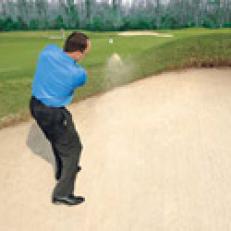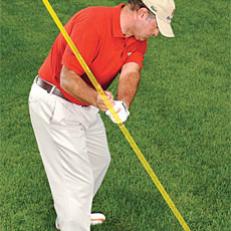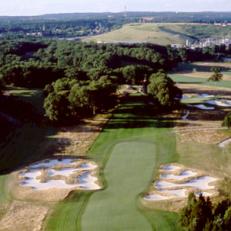To understand the important role of the left hand in making quality contact, put a ball in that hand and mimic its movement during the backswing (the thumb should point straight up halfway back). Now bring the hand back down in front of your belt and "present the ball" by opening your hand. If done correctly, the ball should balance in your palm. This is the position the left hand should be in as it moves through the impact area. Try this drill while you're waiting to tee off.
Crisp contact with the putter is just as crucial as with any other club. If you're consistently coming up short, you might be striking the ball with the bottom of the putterface. To fix this, drop a coin on the green and try to slide it with your normal stroke. To have any success, the putterhead will have to move downward as it approaches the coin and bottom out at the coin's edge. This ensures centerface contact when you putt for real.
Zach Johnson: "When I'm addressing the ball, particularly on a tee, I don't focus on a specific dimple or marking. That would just make me want to hit that spot instead of making a nice swing through the ball. For an amateur, it really is a good idea not to focus so specifically. The ball should be a little blurry. Just make a good swing back and through, and let the ball get in the way."
Johnson: "To win the Masters, I had to block out everything but my strategy from hole to hole. On each tee box, come up with a realistic, shot-by-shot strategy for that hole and stick to it. Having a plan will keep you from thinking about nerve-racking things such as hitting it out-of-bounds."












